Zion National Park is an incredible place of red rock cliffs, slot canyons, iconic hikes, and much more. But it’s not just beautiful; it’s also fascinating!
Want to learn more about Zion? Let’s take a look at some interesting facts about Zion National Park.
If you’re planning to visit Zion National Park by yourself, make your planning easy and stress free with a detailed itinerary. I have 1-, 2- and 3-day itineraries for Zion National Park that include all the park highlights, give you choices based on your preferred activity level, and take all the stress out of planning your trip.
No time right now to read these fun facts about Zion National Park in Utah? Pin It and save it for later:
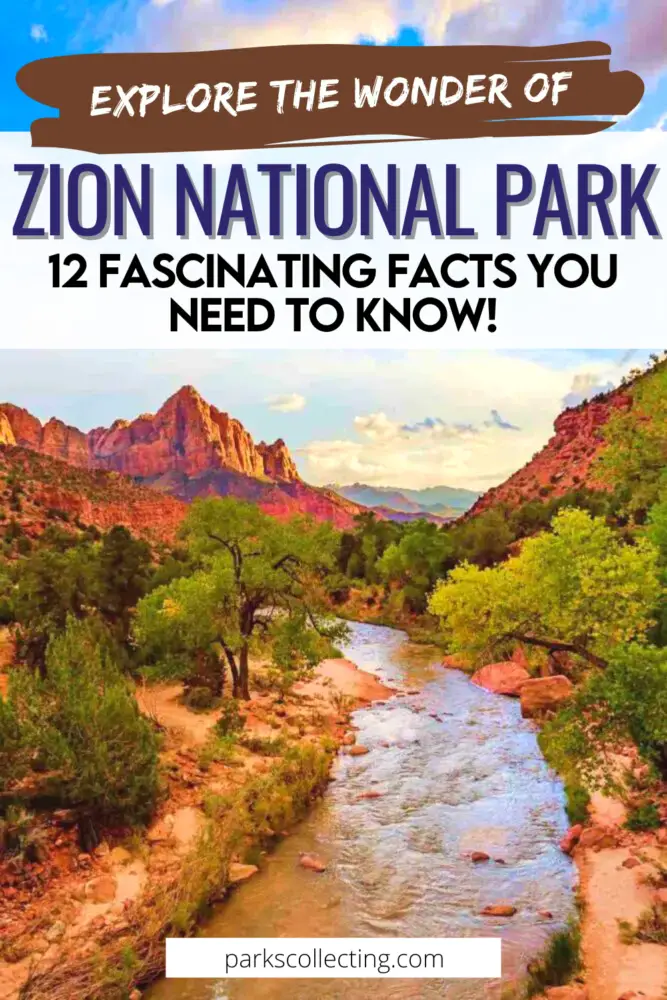
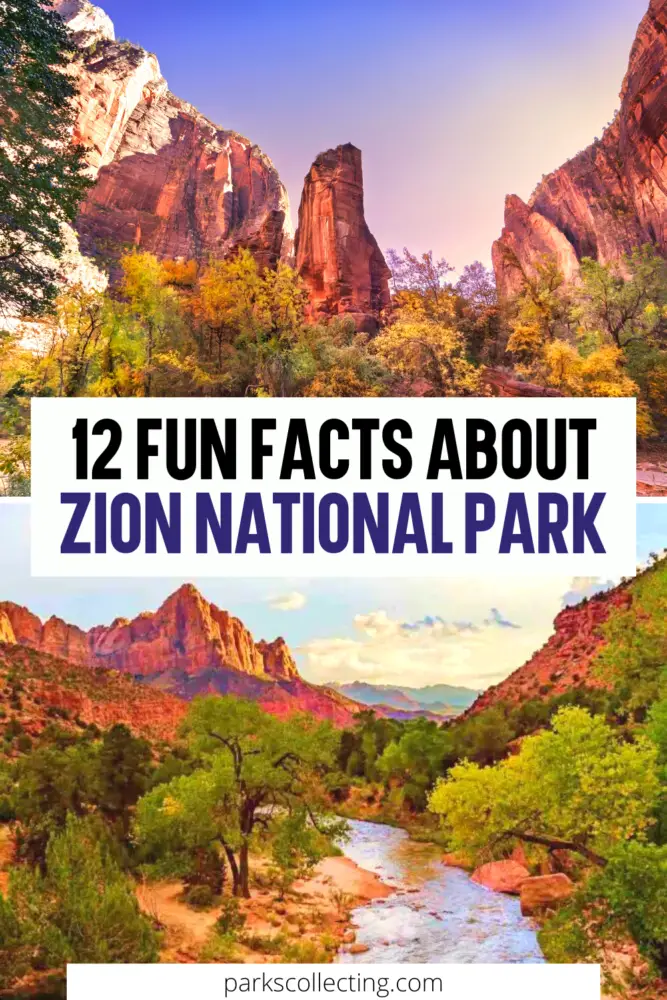
🛏️TOP HOTEL PICK: Check availability now
🚘FIND THE CHEAPEST CAR RENTAL: Search Discover Cars for the best deals
✈️FIND THE CHEAPEST FLIGHTS: Search Skyscanner for the best deals
🧳GET TRAVEL INSURANCE: Get insured with Travelex before you go
📱TAKE AN AUDIO TOUR: Buy an audio tour now
Table of Contents
Basic Zion National Park Facts
⭐ Location: Southwestern Utah, United States
⭐ Size: 229 square miles
⭐ Number of Visitors each Year: 4,692,417 in 2022, making it the third most popular National Park
⭐ Annual Rainfall: The average annual rainfall in Zion National Park is 15.6 inches (1.3 inches/ month)
⭐ Highest Elevation: 8,726 feet (the summit of Horse Ranch Mountain)
⭐ Lowest Elevation: 4,000 feet
⭐ Date it Became a National Park: November 19, 1919
Subscribe to daily national parks planning tips, travel inspiration and trip ideas and get instant access to the free PDF
12 Fun Facts About Zion National Park
12 Fun Facts About Zion National Park
Here are 12 unique things about Zion National Park that you might not know:
1. Zion was Utah’s first National Park
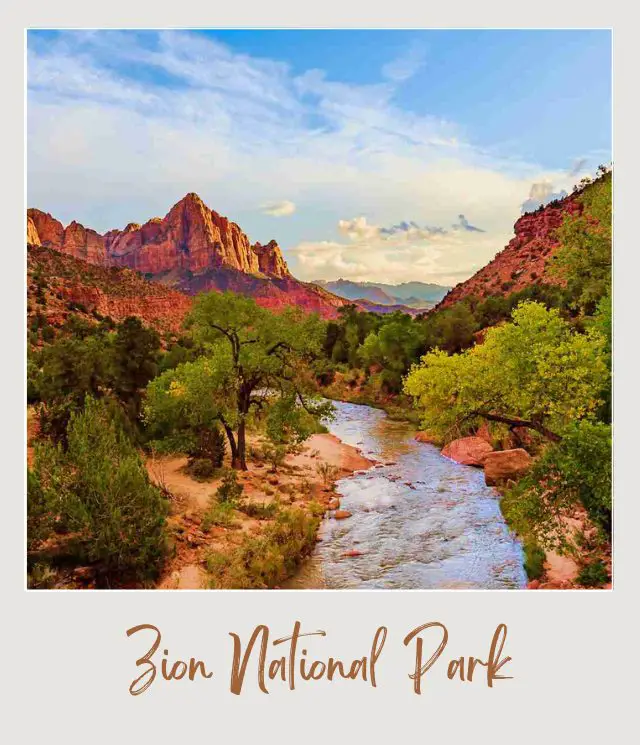
Utah is home to the Mighty Five – five incredible national parks that include Bryce Canyon, Canyonlands, Arches, and Capitol Reef. However, Zion was the first!
The park started out as Mukuntuweap National Monument, which was created by President William Taft in 1909. It changed its name to Zion in 1918 and was then upgraded and became Zion National Park on November 19, 1919, when President Woodrow Wilson signed it into being.
The canyon was originally named “Mukuntuweap” by John Wesley Powell, who surveyed the area in 1872. He named it to honor the Southern Paiute people, who lived there. The name means “straight canyon” or “straight river” in the Paiute language, though the Southern Paiute actually called the canyon “Ioogoon” (“the arrow quiver”).
So, why was it changed to “Zion”? Well, although the park is now one of the most popular national parks in the country, that wasn’t always the case. When it was Mukuntuweap National Monument, very few people visited. The Park Service’s acting director, Horace Albright, felt ‘Mukuntuweap’ was “too difficult to pronounce and really tough to spell” and this deterred prospective visitors.
So, in order to try and attract more visitors, he campaigned for the name to be changed. He succeeded and when more land was added in 1918, the name was changed to Zion National Monument – more about that in fun fact #2.
It worked. In 1914 only 300 people visited Mukuntuweap. But in 1919, the newly designated Zion National Park had 1,814 visitors. Numbers have continued to rise and it’s now the third most popular park in the United States!
➡️ READ MORE: Opening Zion: A Scrapbook of the National Park’s First Official Tourists by J Clark and M Clark – a fascinating book based around two albums of photographs and newspaper clippings from1920 that document a trip made by six young women from the University of Utah into the newly formed Zion National Park.
2. Zion was named by an early Mormon settler
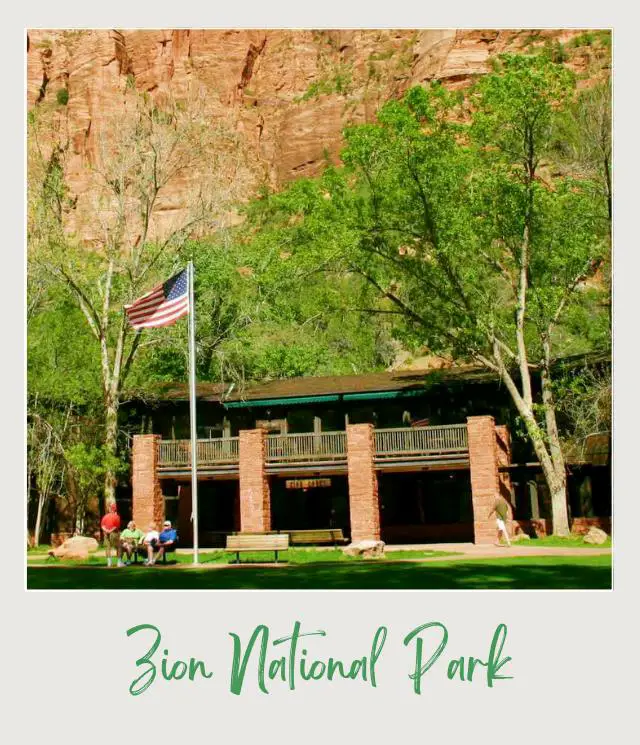
So, how was “Zion” chosen as the name for the National Park?
The word “Zion” is often used by Christians to describe a “holy place” or “kingdom of heaven.” This area, like much of Utah, was settled in the 1800’s by Mormon pioneers. One such man was Isaac Behunin who built a tobacco, corn and fruit farm in Zion Canyon in 1863 near today’s Zion Lodge.
As he sat in his yard and gazed at the towering canyon walls around him, he supposedly said, “Here we have natural temples; we can worship as we please. A man can worship God among these great cathedrals as well as he can in any man-made church; this is Zion.” Since Salt Lake City had first been envisioned as the “City of Zion”, he decided to call the canyon “Little Zion.”
He left the area and moved to Kirtland, Ohio soon after but the name stuck and continued to be used by locals. When they were searching for a name to replace “Mukuntuweap”, this local name seemed like a logical choice.
➡️ READ MORE: Zion National Park (Images of America) by Tiffany Taylor – an interesting book that focuses on the lives of Zion’s early pioneer settlers and chronicles in photos how the park has changed over the past century
3. There are four main sections in Zion National Park
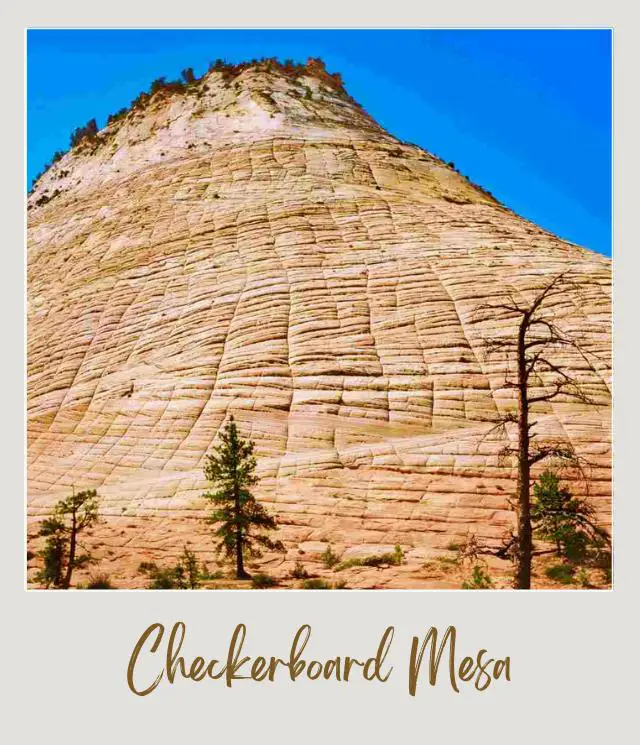
Most people only visit Zion Canyon, which is where the park’s most popular attractions are. However, there are three other sections to the park.
Kolob Canyons is much less visited. It’s about an hour from Zion Canyon and is accessed through a completely different entrance. It’s home to several great hiking trails, a campground and Kolob Arch (see below).
Kolob Terrace lies in the middle of the National Park and is reached by the Kolob Terrace Road. This scenic drive between Virgin and Lava Point has wonderful views and several trails.
The East Mesa lies along the top of the east rim and also contains several great hikes, as well as unique geographic features like Checkerboard Mesa.
➡️ READ MORE: Planning a Trip to Zion National Park: Complete Guide
4. One of the greatest engineering feats of all time is found in Zion
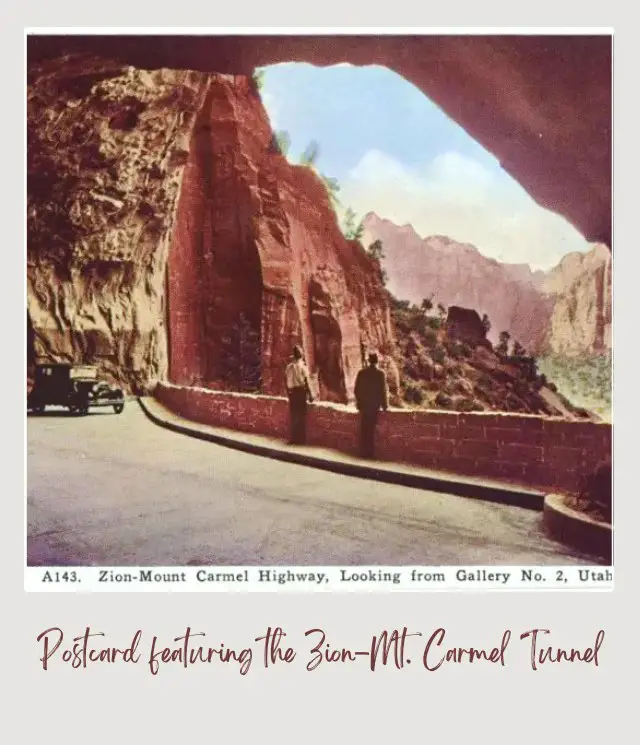
You never used to be able to drive from the East Mesa into Zion Canyon. But you can now due to one of the world’s most incredible feats of engineering.
The Zion-Mt. Carmel Tunnel was built in 1930 to connect the East Mesa (and Bryce canyon and Grand Canyon) to the floor of Zion Canyon and what is now the main south entrance to the national park. The 25-mile stretch of road includes an incredible 1.1-mile tunnel that was built in the side of Pine Creek Canyon.
If you enter the national park from the east entrance, you will soon go into the tunnel. There are windows off to the right as you descend, that were intentionally built to provide glimpses of the dramatic scenery. After just over a mile, you’ll emerge and prepare to have your breath taken away as the panorama of Zion Canyon is laid out before you.
The construction of the tunnel is one of the most incredible Zion National Park facts. History books talk of how this was started in 1927 and finished in 1930 and at the time was the longest tunnel of its type. The Zion-Mount Carmel Highway, including the tunnel, cost $1,896,000, which was a huge sum of money at the time.
Construction was not easy. The galleries, or windows, that were specially built to provide views of Zion Canyon, ‘involved the construction of rock walls and arched-masonry culverts. Add in the seven switchbacks the tunnel goes through, bridges that needed to be built, and the difficulty of working with the soft sandstone and the risk of landslides, and you can start to appreciate just how incredible it is.
The tunnel wasn’t designed for the large vehicle, like RVs and trailers, that exist today. Consequently, larger vehicles have trouble navigating the narrow lanes and turns in the tunnel. If your vehicle is 11’4″ or taller or 7’10” or wider, you will need to get a special tunnel permit so that rangers can close the tunnel to two-way traffic and you can drive down the middle of the road.
➡️ READ MORE: The Zion Tunnel: From Slickrock to Switchback by DT Garate – learn more about this incredible feat of engineering.
5. Zion contains the fourth largest freestanding arch in the world
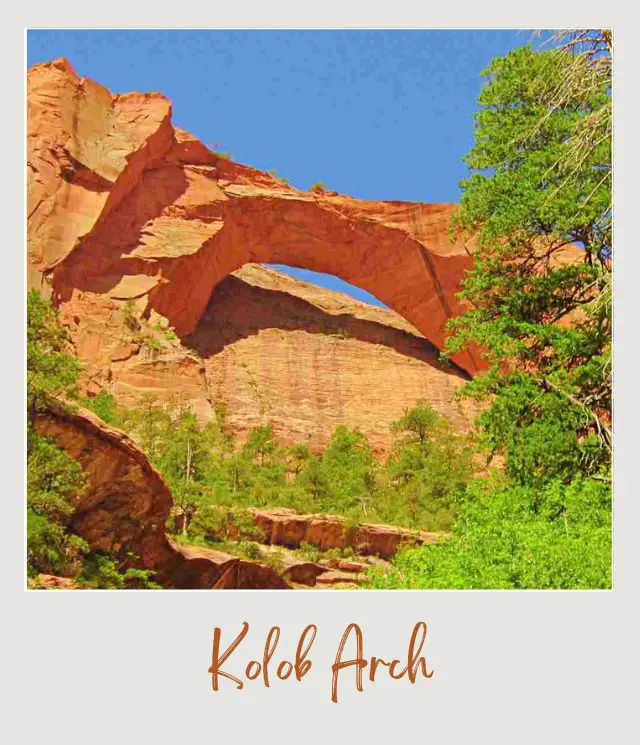
Arches National Park is the U.S. national park most famous for natural arches, but it’s not the only park that has them. In fact, the fourth largest freestanding natural arch in the entire world is in Zion. The third longest is Landscape Arch in Arches National Park, and the two longest are in China.
The arch in question is Kolob Arch and it’s found in the Kolob Canyons District of the park. Kolob Arch is 287 feet long, which is just three feet shorter than Landscape Arch.
To see it, you’ll need to hike 14 miles roundtrip into the backcountry to a viewpoint. The arch itself is off limits.
➡️ READ MORE: Zion Canyon: A Storied Land by G Chesher – written by a park ranger who spent over two decades in the park, this goes over a lot of the history, ecology and geography of the park.
6. Zion National Park has a Subway and Wall Street
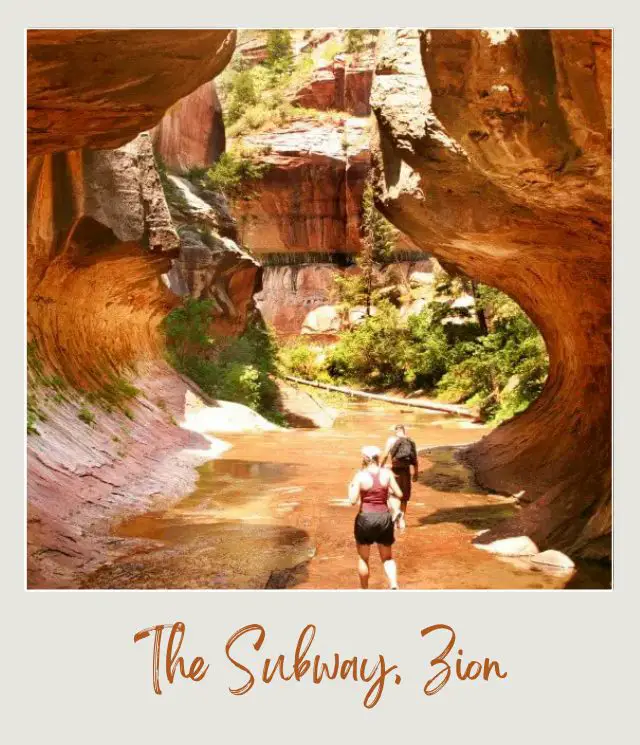
One of the cool facts about Zion National Park is its connection to New York City – at least in the naming of a couple of famous places in the park. On the surface, this dramatic landscape and a megacity couldn’t be more different, but there are two features that were inspired by famous counterparts in NYC.
At its far end, Zion Canyon narrows into a slot canyon that is appropriately called The Narrows. You can hike this (see Fun Fact #9).
About 3 miles into this slot canyon, it becomes just a few yards wide. The cliffs on both sides tower hundreds of feet above. This stretch reminded people of the skyscrapers of Wall Street, which gave it its name.
Another fun fact: There is also a Wall Street in Bryce Canyon National Park.
Another part of Zion National Park reminded people of the subway tunnels in NYC. The left fork of North Creek slot canyon, or “The Subway” as most people call it, is a rounded, tunnel-shaped slot canyon in the backcountry of the national park.
This is an iconic hike that requires route finding (bottom-up approach) and some rappelling (top-down approach). To get there, you need a special wilderness permit.
➡️ READ MORE: Best Hikes in Zion National Park
7. Zion is a great place to climb cliffs
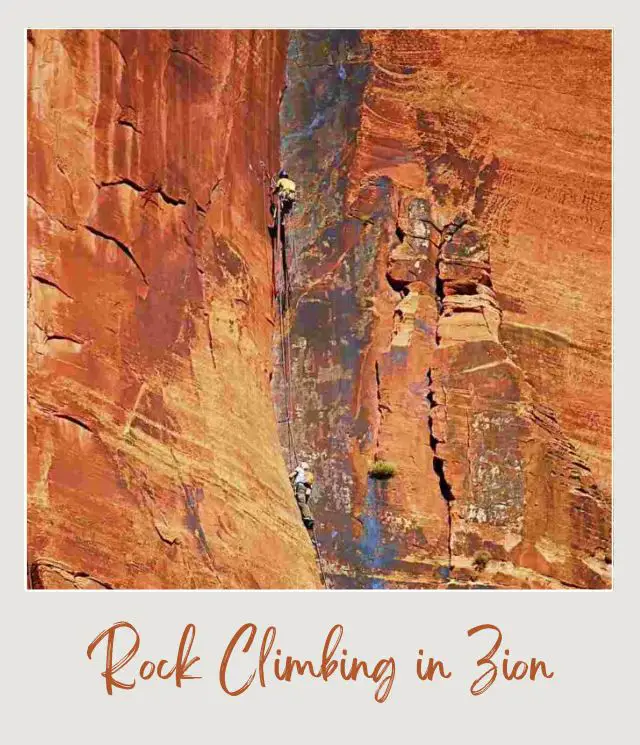
The cliffs and canyons in Zion are Navajo sandstone, which was originally formed from sand dunes that then built up in layers some 110 and 270 million years ago and was subsequently shaped by wind and water.
Today, Zion National Park features enormous 2000-feet sandstone cliffs, including iconic monoliths like the Court of the Patriarchs and Great White Throne, in addition to the canyon walls.
This makes it a great place for climbing! The peak season is March to May and September to November, when climbers come from all over to enjoy a variety of climbing routes. There are climbs for all levels – from beginners to experts.
There are also routes for different kinds of technical climbing, from sports climbing, where climbers use bolts embedded into the rocks, to more challenging traditional climbing with ropes and lots of hand holds.
If this sounds appealing, you’ll need a permit and all the right safety gear. If you’re new to climbing, there are several outfitters in Springdale that offer guided climbs.
➡️ Book an intro to climbing and rappelling experience here
➡️ READ MORE: Daniel Stih’s Rock Climbing in Zion National Park by D Stih – details on climbing routes with descriptions, photos, maps and drawings.
8. Zion is also a great place to jump off cliffs
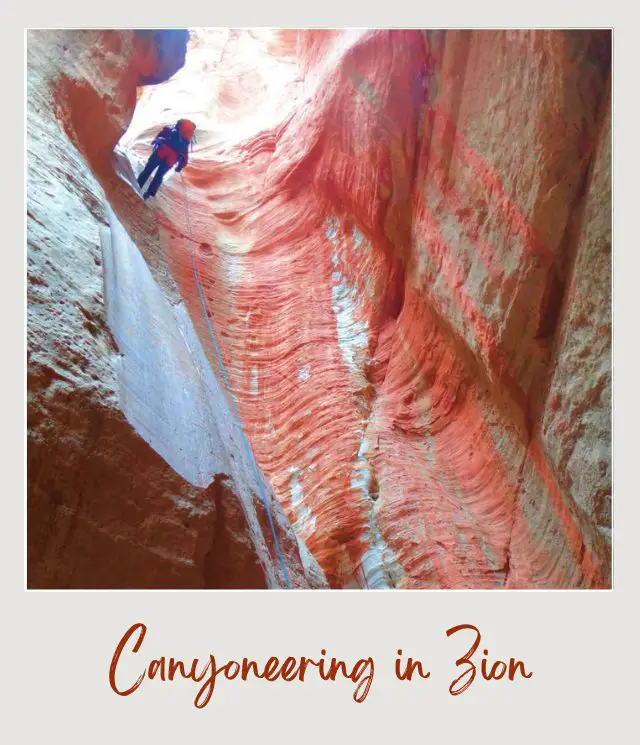
In addition to towering cliffs, Zion and the surrounded area is riddled with narrow slot canyons. These extremely narrow canyons are formed over thousands of years by water rushing through soft rock.
There are several places where these canyons descend in ‘steps’, with drops offs ranging from a few feet to a few hundred feet between each layer.
These are the perfect place for rappelling – jumping off the edge of each of these drop-offs down into the next layer of the slot canyon.
➡️ Book a half-day canyoneering trip to Coral Sands
➡️ READ MORE: If you’d like to learn more about canyoneering in Zion, read my guide to Canyoneering In Zion National Park
9. You can hike in a river in Zion National Park

Zion Canyon narrows into a slot canyon at it far end, with the Virgin River flowing through it. The hike through the Narrows – most of which is done by wading upstream in the river, is one of the most iconic hikes in the country.
The hike can be done as a through hike (top-down), which is 16 miles and requires camping overnight. However, most people do it as an out-and-back day hike from the Temple of Sinawava (the last stop on the Zion shuttle) to Wall Street, which is 3 miles each way.
This is a unique experience I recommend everyone who is physically able to try. However, since most of the hike is actually in the river, the canyon is closed if the water level is too high or if there is a danger of flash flooding.
➡️ READ MORE: For more details about this amazing hike, read my Guide to Hiking The Narrows
10. Zion has one of the most dramatic – and dangerous – hikes in the country
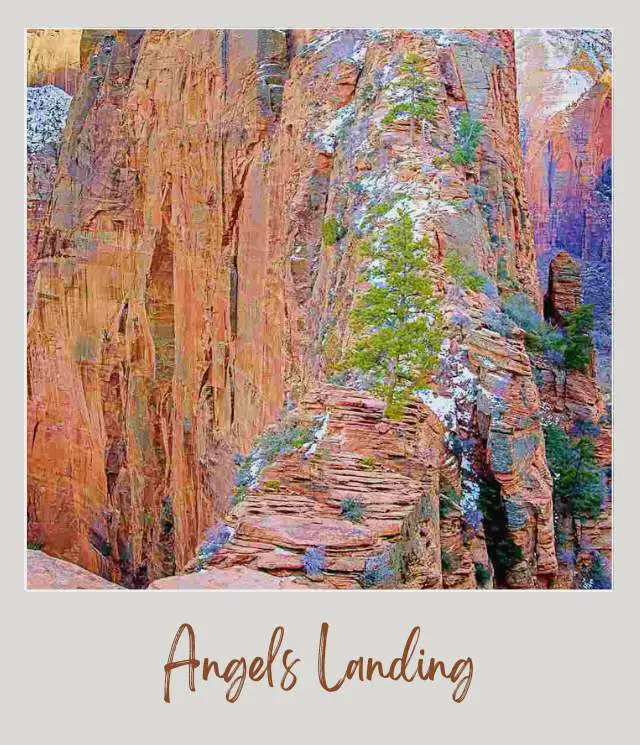
The Narrows isn’t the only famous hike in Zion. Arguably even more famous – and dangerous – is the bone-chilling hike to Angels Landing.
The hike is 5 miles round trip, and gains 1,500 feet mostly by a series of 21 narrow switchbacks called Walter’s Wiggle. That’s the easy part, though!
It is the last half a mile that makes the trail so legendary. From Scouts Lookout at the top of Walter’s Wiggles to Angel’s Landing, the trail is only about 5 feet wide as it crosses a ridge with sheer drop offs hundreds of feet high on both sides. There is a chain to hold on to, but it’s still a thrilling hike that is definitely not good for those with a fear of hikes.
The rewards at the end are breathtaking views down the length of Zion Canyon.
It’s also not a hike to take lightly. This hike has been described as one of the most dangerous hikes in the world; more than 15 people have fallen to their deaths while attempting this hike!
However, if you are sensible and take basic precautions, it’s perfectly safe. Thousands of people hike it every year without incident.
In fact, the hike became so popular that the National Park Service has implemented a lottery system to limit the number of hikers on the trail at any given time.
➡️ READ MORE: If you’d like to try this hike, learn How To Get Angels Landing Permits
➡️ For stories about deaths on this hikes and other parts of Zion, pick up Death in Zion National Park: Stories of Accidents and Foolhardiness in Utah’s Grand Circle by Rando Minetor
11. There are archeological sites from people who lived in Zion over 10,000 years ago
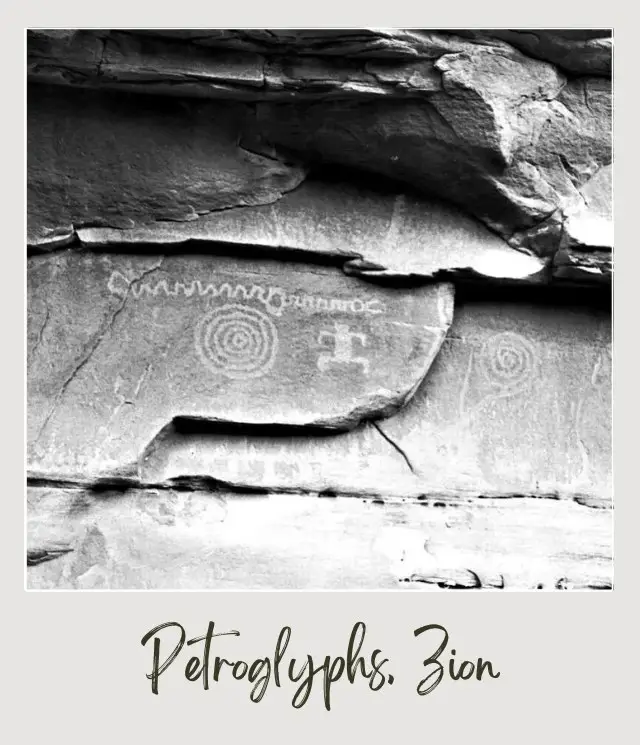
Before Zion became a national park, it was settled by Mormon pioneers in the 1800s. People lived here long before that, however. In fact, the area has been inhabited for more than 10,00 years!
Various small sites in and around the park exist. From petroglyphs (rock carvings) to granaries, the area is filled with evidence of a rich history.
A great way to learn more about this is to visit the Human History Museum, near the main south entrance to the park.
➡️ READ MORE: Zion Human History Museum
12. Zion National Park is part of an active volcano field
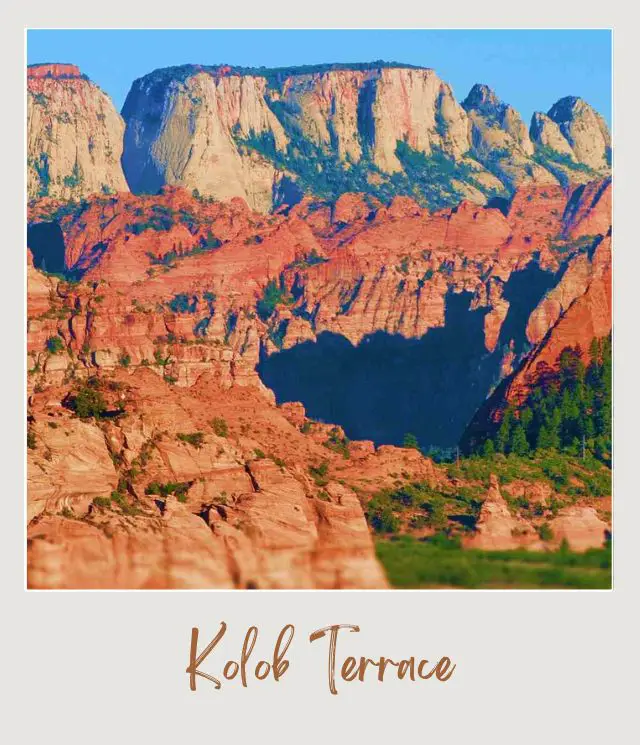
Zion is famous for its canyons, carved by wind and water over thousands of years. However, it is also part of the Santa Clara volcano field. Eruptions in this field typically happen every few 10,000 years. The last was 32,000 years ago (in Snow Canyon State Park), so its due for another – at least in the next 10,000 years or so!
The first major eruption in the area was 1.1 million years ago on the Kolob Plateau near Lava Point in what is now the Kolob Terrace section of the park. This lava flowed all the way down to the Virgin River, possibly damming it and creating a temporary lake.
310,000-220,000 years ago, several eruptions occurred in the Grapevine Wash area. The Kolob Terrace road winds past these lava flows today.
Then 120,000 years ago, Crater Hill erupted just below the West Temple between Rockville and Virgin and the lave again dammed the Virgin River creating a temporary lake.
So, who knows. Maybe the Virgin River will become a lake yet again some time.
➡️ READ MORE: Water, Rock & Time: The Geologic Story of Zion National Park by R. Eves, R Wheeler, and L Hafen – the story of the formation of Zion Canyon with plenty of photos to accompany the text
➡️ Read more Fun Facts about other US National Parks
More Information About Zion National Park
Now that you’ve learned all about Zion National Park, are you feeling inspired to visit Zion National Park? Start planning your trip now with these guides:
⭐ Zion National Park Guide
⭐ Zion Itineraries
⭐ Planning a Trip to Zion National Park
⭐ 7 Mistakes to Avoid
⭐ How Many Days in Zion National Park?
⭐ Best Hikes in Zion National Park
⭐ How To Get Angels Landing Permits
⭐ Hiking The Narrows In Zion National Park
⭐ Best Things To Do In Zion National Park
⭐ Canyoneering In Zion National Park
⭐ Best Photo Spots in Zion National Park
⭐ How To Get To Zion National Park
⭐ Zion Shuttle Service Guide
⭐ How to visit Zion Without Using the Shuttle
⭐ The Airports closest to Zion National Park
⭐ The Closest Airport to Zion National Park
⭐ The Best Time of Year to Visit Zion National Park
⭐ Visiting Zion Throughout the Year
⭐ 12 Tips For Visiting Zion National Park
⭐ Best Books About Zion National Park
⭐ Best Vacation Rentals Near Zion National Park
Do you have any other Zion fun facts to share? I’d love to hear them. Join my private Facebook group National Parks Collectors and comment and let me know (you can also pick up extra planning tips, share your photos and stories with other national park lovers and more).
Subscribe to daily national parks planning tips, travel inspiration and trip ideas and get instant access to the free PDF
12 Fun Facts About Zion National Park
If you liked these fun facts: Zion National Park, Pin It to your Zion National Park board!


💡 Are you just starting to think about taking a national parks trip? Get Inspiration
‼️ Are you looking for helpful tips for visiting US national parks? Read articles that share useful tips on a range of national-park related issues
💻 Are you starting to plan a trip to Zion National Park? Read my Guide to Zion National Park
📋 Do you want a ready-made super detailed plan for your trip to Zion? Get a detailed 1 – 3-day Zion National Park Itinerary
🛏️ Are you looking for a place to stay near Zion National Park? Find a vacation rental near Zion National Park
💲 Are you ready to book your trip? Use these Planning and Booking Resources
📖 Do you want to read a book about Zion National Park? Check out my Recommended Reading List for Zion National Park
About the Author
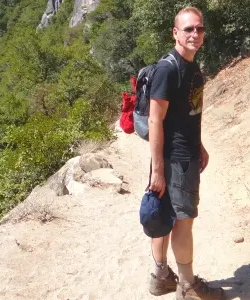
James Ian is a national park, camping and hiking expert.
He has dedicated his life to travel, visiting more than 80 countries, all 7 continents and most of the national parks in the United States. With over 35 years experience in the travel industry, James has worked on cruise ships, at resorts and hotels, and as a travel planner who’s helped hundreds of people plan successful trips to US national parks.
Based on his experience visiting our national parks multiple times, in-depth research and expertise as a travel planner, James has published detailed itineraries for many of the major national parks in the US. These itineraries, as well as in-depth park guides, and other resources will help you have your own incredible trip to US national parks without stress and hassle.
As a national park expert, James has contributed to many publications, including USA Today, Newsweek, Time Business News, Savoteur, Best Trip, and Wired.
I’m a member of the Amazon Services LLC Associates Program. As an Amazon Associate I earn from qualifying purchases.
